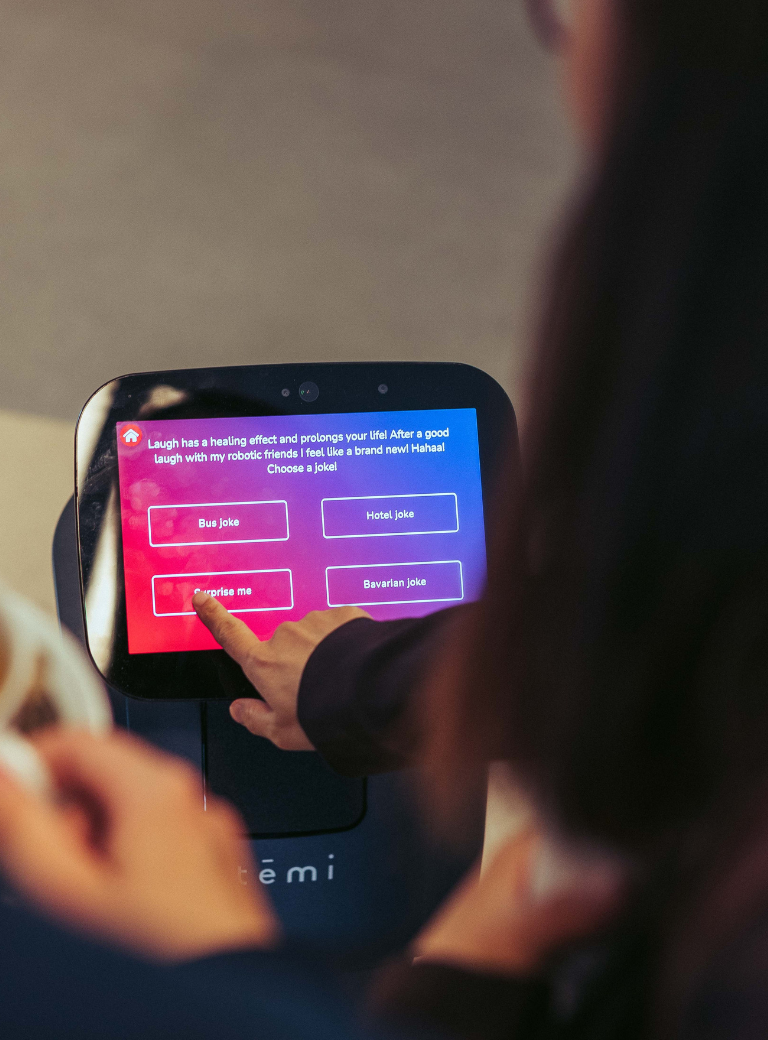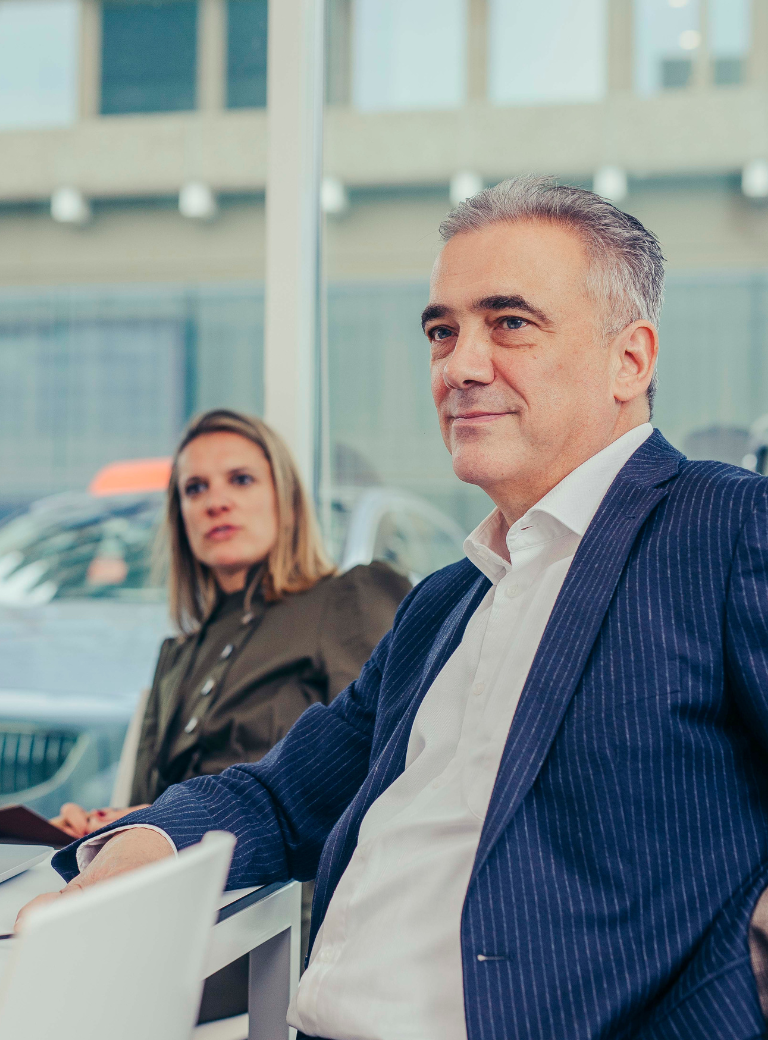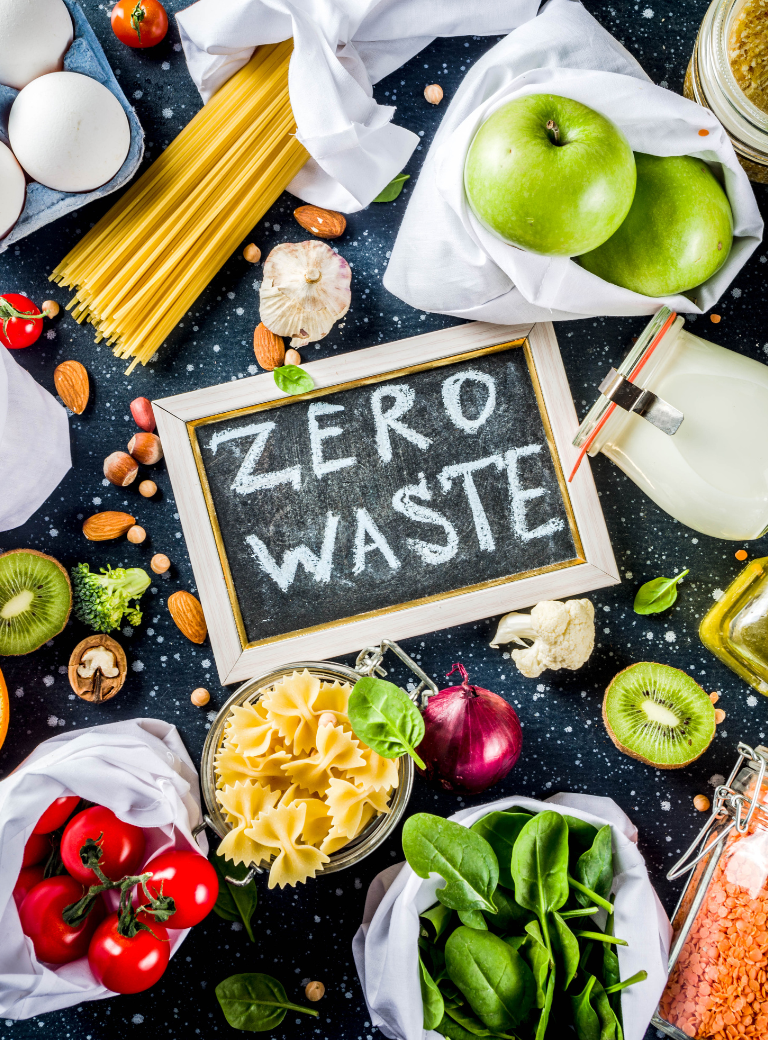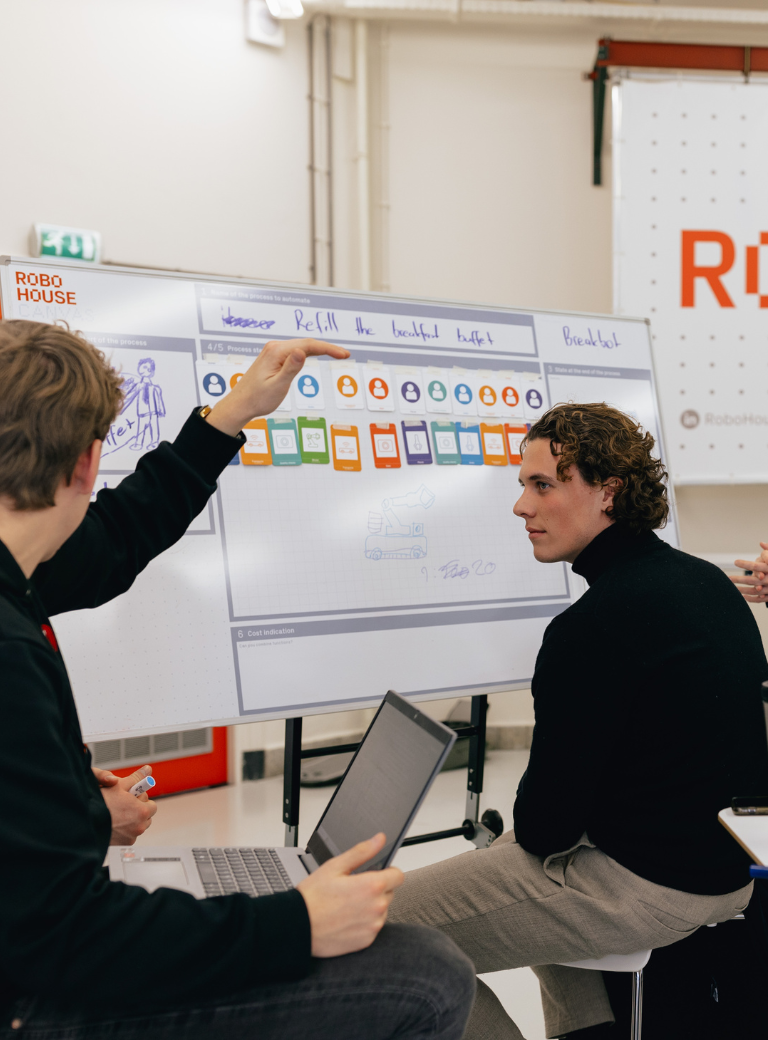
Technology as a monitor to combat food waste
In the article series “The Green Claim” in the newspaper ‘Trouw’, journalist Robin van Wechem seeks out how green certain sustainable solutions really are. In her latest article, she dives into the green claim of Orbisk, a food waste monitor using AI as a solution to food waste.
In the process of gathering information and opinions about Orbisk and its capability to reduce food waste, van Wechem contacted Anna de Visser-Amundson, Fellow in Consumer Choice Behaviour at Hotelschool The Hague who leads large scale projects in the Research Centre related to food circularity and sustainable consumption.
In cooperation with the Research Centre and the F&B department, HTH has developed into a thought leader on the topic of food waste over the last few years with many important research and industry projects. As part of this work, HTH installed an ‘Orbisk’, first at the campus in Amsterdam and later at the campus in The Hague, to combat our own food waste with state-of-the-art technology. For van Wechem's article, with input from F&B colleagues, we were, therefore, able to share firsthand experiences about working with such devices and also how to change food waste behaviors in general
Anna de Visser-Amundson, Research Fellow in Sustainable Consumption at Hotelschool The Hague

Below you can find a translation of the Dutch article in English by author Robin van Wechem. Feel free to contact de Visser-Amundson at the Research Center if you have any questions or would like any more information about our Food Circularity projects.
A monitor to combat food waste could help, but 'behavioural change is the key’.
If food waste was a country, it would be one of the most polluting in the world. If global food waste were a country, its CO2 emissions would rank third after China and the US. Wasting 1 kg of food also means wasting many natural resources (planting, growing, processing, packaging, and transporting). In the Netherlands, two billion kilos of food are wasted every year. 1 Kilo of wasted food equals 4.5 KG of CO2.
Restaurants are the key culprit of this food waste. According to Olaf van der Veen, co-founder of Orbisk, medium-sized restaurants throw away an average of 30 to 60 kilos of food every day. This waste could be significantly reduced by installing the Orbisk food monitor and software system.
Before a chef or restaurant worker throws away food, they briefly hold it in front of the Orbisk monitor. The monitor recognises the product from the image and calculates the ingredients based on the weight (there is a scale under the trash can). After disposal, the software provides a detailed overview, broken down by weight, CO2 emissions, and euros.
Awareness and more efficient purchasing
According to Van der Veen, waste will decrease on average, by half, mainly due to improved awareness of the problem and more efficient purchasing. This can lead to restaurants saving considerably on purchasing costs. Ten kilos less waste per day already saves 5 per cent in costs, which can amount to tens of thousands of euros per year. In most cases, this is production waste, rather than preparation (cutting) waste or consumer plate waste.
There are many causes of food waste. Hygiene legislation is one issue, for example, a caterer that operates on weekdays starts the week on Monday by throwing out all the supplies from the previous Friday. Another problem is the packaging. If the wholesaler supplies a product in too large a quantity per packaging, the caterer may not keep leftovers. There is also often a lack of overview, says Van der Veen. “A chef may need to keep an eye on up to two hundred ingredients.”
At another customer, a restaurant for business dinners, guests could eat à la carte during the week and a buffet at the weekend. That was meant to save the cost of hiring a cook at the weekend. But they threw away so much food at the buffet (on the weekend) that they hired a cook again for that money.”
Experts are positive about the initiative. Director of the Foundation Together Against Food Waste (Stichting Samen Tegen Voedselverspilling) Toine Timmermans, thinks the Orbisk claim that customers throw away up to 50% less is realistic. “75 restaurants took part in the first edition of the Horeca Food Waste Challenge, which we organised with Rabobank in 2019. On average, they had 21 per cent less waste in four weeks, with peaks of up to 75 per cent. At the second edition last year, six hotels in The Hague saved an average of 44.5 per cent. It’s a saving of more than 9,000 kilos and about 70,000 euros annually.”
Buying too much, preparing too much and serving too much
Sanne Stroosnijder, also affiliated with Wageningen University, adds that about 12 to 14 per cent of food waste in the Netherlands is attributable to the catering industry, which also includes catering companies. “The causes differ, although British research shows that on average 21 per cent is caused by spoilage, 45 per cent by food preparation, and 34 per cent comes from consumer plates. That means buying too much, preparing too much, and serving too much.”
She thinks Orbisk can help cooks with exactly that. “Insight at the product level is an important precondition for combating food waste. In the past, it was done by hand in the kitchen, using containers, scales, and forms. It was prone to errors and often just a snapshot. A monitor that continuously collects data makes that process much easier.”
Elena Cavagnaro, lecturer of Sustainability in Hospitality and Tourism at the NHL Stenden University of Applied Sciences, puts an emphasis on the combination of technology and behavioural change. “A scanner can provide insight into what is being wasted, but what happens afterwards? If technology is not followed up with behavioural change, things will remain the same.”
Cooks don't analyse data, they prepare food
Anna de Visser Amundson, a senior researcher at the Hotelschool The Hague, agrees. “Cooks are busy preparing food and not analysing data, they need to feel the urgency to make time for that. In addition, the camera must document all food waste, which sounds simple, but it has to be done in a sector that works with very tight margins and a minimum of staff.”
Food waste is often part of the deal she continues. “Chefs love food and hate waste. At the same time, they want to meet customers' high expectations. They worry that if they don't have five types of bread and ten different side dishes on their menu, customers will go elsewhere.”
However, change is coming as Cavagnaro points out. “I see many restaurateurs working on this. Often it’s also a budget issue, especially after two years of lockdowns.” According to Van der Veen, his invention is very cost-effective. “Orbisk costs seven thousand euros per year, including all software and support. So if a company throws away four kilos less per day, it’s already worth the investment.”
You can read the original article (in Dutch) here






